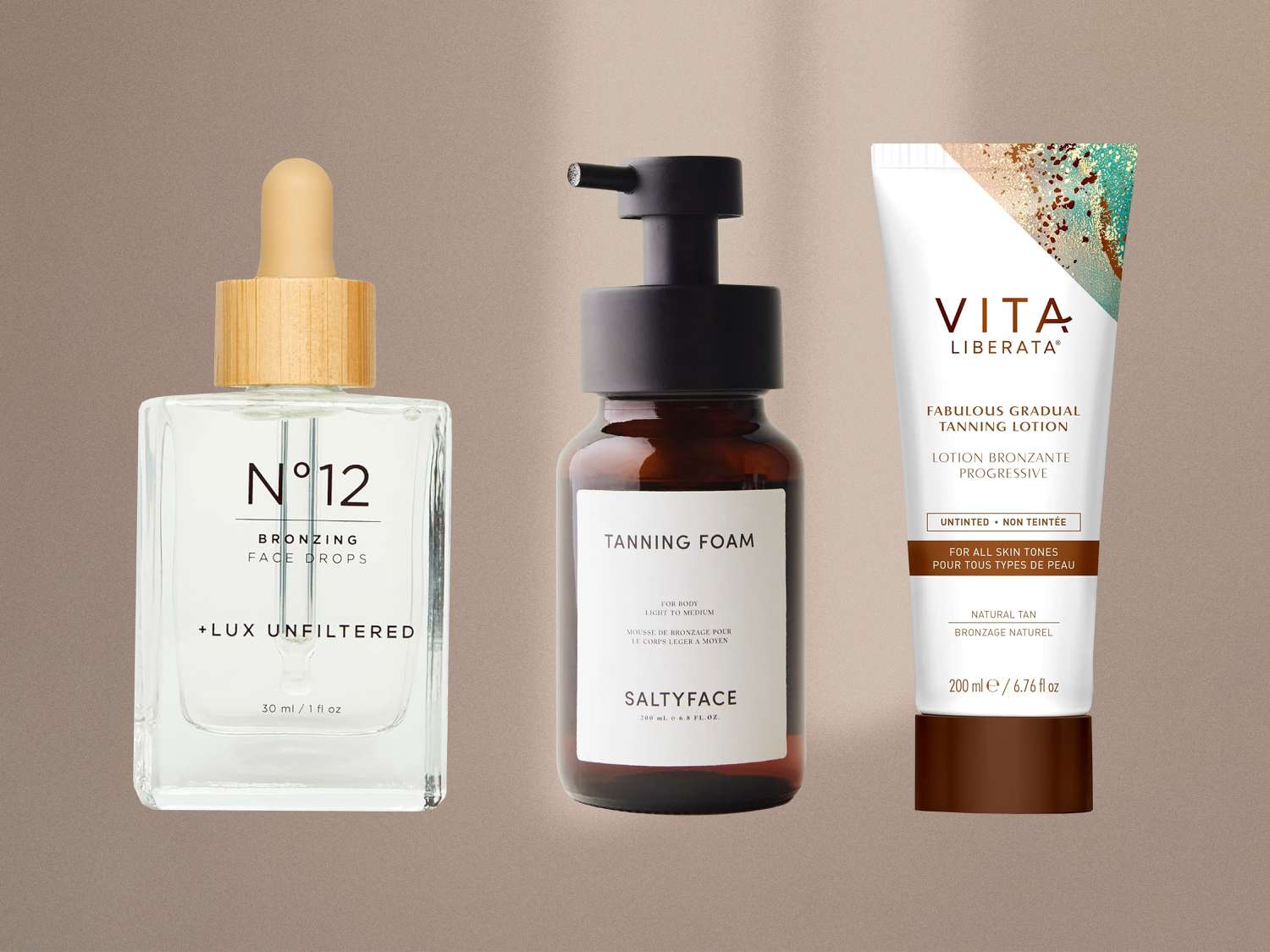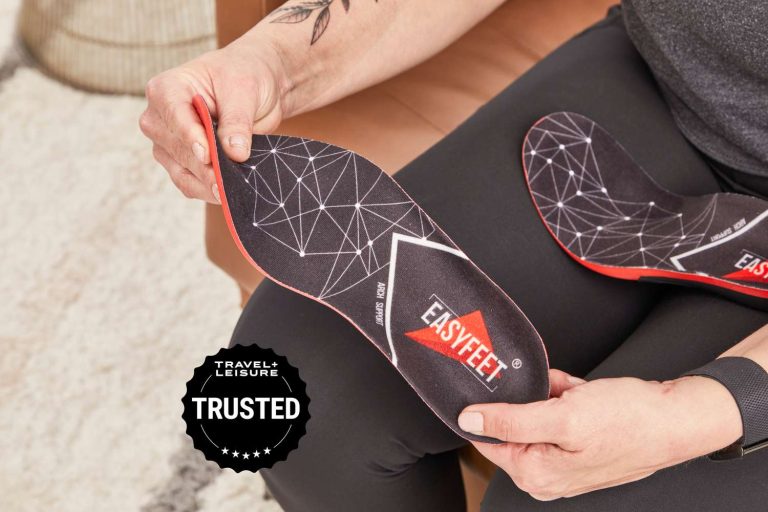9 Best Self Tanners for a Natural Look: Expert Reviews & Application Tips
Dreaming of that sun-kissed glow without the harmful UV rays? Self-tanners are your best bet for achieving a radiant, bronzed look all year round. With so many options on the market, finding the perfect product can feel overwhelming.
Examining Ingredients in Top Self Tanners
Understanding the ingredients in your self-tanner is crucial for both achieving a natural look and ensuring your skin’s health. Let’s dive into the key ingredients to look for and those you should avoid.
Key Ingredients to Look For
Dihydroxyacetone (DHA): DHA is the most common active ingredient in self-tanners. Derived from sugar, it reacts with the amino acids on your skin to create a natural-looking tan that lasts around 5-7 days.
Erythrulose: This natural sugar provides a slow-developing, even tan. When combined with DHA, it offers a longer-lasting and more uniform color.
Aloe Vera: Aloe Vera keeps your skin hydrated. It’s essential for preventing dryness and flakiness, which can affect the evenness of your tan.
Hyaluronic Acid: Hyaluronic Acid is great for retaining moisture. It helps the tan look smoother and more even while keeping your skin plump and hydrated.
Vitamin E: Vitamin E has antioxidant properties. It protects your skin from oxidative stress and keeps your tan looking fresh for longer.
Ingredients to Avoid
Parabens: Parabens are preservatives linked to hormonal disruptions. They can be harsh on your skin, especially if you have sensitive skin types.
Alcohol: Alcohol can dry out your skin. Excessive dryness can lead to an uneven tan and potential irritation.
Artificial Fragrances: Artificial Fragrances can cause allergic reactions. Opt for fragrance-free or naturally scented products to minimize the risk of skin sensitivity.
Mineral Oil: Mineral Oil can clog your pores. This can lead to breakouts and an uneven tan, especially if you have acne-prone skin.
Understanding which ingredients benefit your skin and which ones might harm it helps you pick the best self-tanner for a gorgeous, healthy glow.
Review of the 9 Best Self Tanners
Your quest for the perfect glow ends here. Discover these top self-tanners designed to meet diverse needs.
Best for Sensitive Skin
Beauty by Earth Self Tanner: This product is ideal if you’ve got sensitive skin. It contains natural ingredients like organic aloe vera, shea butter, and green tea extract that soothe and hydrate. Free from harsh chemicals, it minimizes irritation while delivering a natural, streak-free tan.
Best for Quick Results
St. Tropez Self Tan Express Bronzing Mousse: When you’re in a hurry, this formula delivers a beautiful glow in just one hour. Adjust the depth of your tan by showering after one, two, or three hours based on how dark you want to go. It’s lightweight, easy to apply, and dries quickly.
Best for a Natural Look
Tan-Luxe The Gradual Illuminating Gradual Tan Lotion: For the most authentic tan, this lotion gives you control with its gradual build. This product blends effortlessly and leaves no streaks, providing a subtle, natural bronze over a few days. It’s perfect for beginners and experts alike.
How to Apply Self Tanners Effectively
Getting the perfect tan requires more than just choosing the right product. You also need to apply it correctly to achieve a natural and even glow.
Preparation Steps
Exfoliate your skin. Use a gentle scrub to remove dead skin cells, focusing on rough areas like elbows, knees, and ankles. This ensures a smooth canvas for the tanner.
Moisturize dry areas. Apply a light moisturizer to dry spots to prevent the tanner from clinging and creating dark patches.
Shave beforehand. Shave or wax at least 24 hours before applying the self-tanner to avoid irritating freshly shaven skin.
Application Techniques
Use a tanning mitt. A mitt helps distribute the tanner evenly and protects your hands from staining.
Apply in sections. Start with your legs, working your way up to your torso, arms, and face. This method ensures full-body coverage and prevents missed spots.
Blend well. Use circular motions to blend the tanner, especially around joints and hard-to-reach areas, for a streak-free finish.
Allow time to dry. Wait at least 10 minutes before getting dressed to avoid transferring the tanner to your clothes.
Avoid water and sweat. Stay dry for at least 6-8 hours after applying the tanner to let it fully develop.
Tips for Maintaining Your Tan
Keeping your tan looking fresh and natural requires some care and attention. Follow these tips to ensure your glow lasts as long as possible.
Moisturizing Tips
Moisturize Daily. Hydrated skin holds a tan longer, so apply a moisturizer every day. Choose a lotion rich in shea butter or glycerin.
Avoid Hot Showers. Hot water can dry out your skin, causing your tan to fade prematurely. Stick to lukewarm showers to maintain hydration.
Exfoliate Gently. Use a gentle exfoliator every few days to avoid patchiness. Sugar scrubs work well without stripping color.
How Often to Reapply
Reapply Every 3-5 Days. Most self-tanners last around a week, so reapply every few days to keep a consistent color.
Spot Check Before Reapplying. Check for any uneven areas and blend these first. This ensures a more even and natural-looking tan.
Use Gradual Tanners for Maintenance. Gradual tanners can be great for maintaining color. They build up color slowly and help you avoid an uneven tan.
By following these tips, you’ll keep your tan looking flawless and natural for longer periods.
Compare Spray Tans with Lotion and Mousse Tanners
Choosing between spray tans, lotion tanners, and mousse tanners depends on your needs and preferences. Here, we’ll explore the benefits of each type.
Benefits of Spray Tans
Spray tans provide even coverage. The fine mist ensures that every part of your skin gets tanned evenly, avoiding streaks and splotches.
Offer quick application. You can get a professional spray tan in under 20 minutes, making it a convenient option if you’re in a rush.
Provide customizable shades. Spray tan salons often let you choose your preferred shade, so you get the exact look you want.
Advantages of Lotion and Mousse
Offer hydration benefits. Many lotion tanners come with moisturizing ingredients, which keep your skin hydrated while giving you a tan.
Allow controlled application. You have more control over where and how much product you apply, reducing the risk of uneven patches.
Dry quickly. Mousse tanners typically dry faster than lotions, making them ideal if you’re short on time and don’t want to wait.
Provide lasting results. Both lotion and mousse tanners tend to have longer-lasting effects compared to spray tans, often maintaining your tan for up to a week with proper care.
The Role of Price in Choosing the Right Self Tanner
Price plays a significant role in selecting the best self-tanner. Whether you’re on a budget or willing to splurge, understanding the price points can guide your decision.
Budget-Friendly Options
Affordable self-tanners provide great results for less. Brands like Jergens Natural Glow and St. Moriz offer effective products at $10-$20. These options often include moisturizing ingredients and easy application methods. Keep in mind, budget-friendly doesn’t mean compromising quality.
High-End Tanners: Are They Worth It?
Expensive tanners offer premium ingredients and advanced technology. Products like St. Tropez or Isle of Paradise range from $30-$55. These tanners provide longer-lasting results and often include added skincare benefits. If you value luxurious textures and additional skin-nourishing ingredients, high-end tanners might be worth the investment.
Safety Considerations When Using Self Tanners
When using self-tanners, ensuring your safety is crucial. Here are some key points to keep in mind.
Pointers on UV Protection
Understand that self-tanners don’t protect you from UV rays. You’ll still need sunscreen with SPF 30 or higher when out in the sun. Apply your self-tanner as directed, then layer your sunscreen on top once it has dried to maintain protection. Reapply sunscreen every two hours, especially if swimming or sweating.
Potential Skin Reactions
Be aware of potential allergic reactions. Always perform a patch test on a small skin area 24 hours before full application. Key ingredients like DHA (dihydroxyacetone) can cause irritation for some. Look for products labeled hypoallergenic or designed for sensitive skin to minimize risk. If you notice any redness, itching, or rash, discontinue use immediately and consult a dermatologist.
Conclusion
Choosing the right self-tanner can transform your appearance and boost your confidence without the risks of UV exposure. Whether you prefer spray tans for their even coverage or lotions and mousses for their hydration benefits, there’s a perfect option for everyone. Remember to prioritize safety by using sunscreen, performing patch tests, and being mindful of ingredients like DHA. With the right preparation and application techniques, you can achieve a natural, sun-kissed glow that lasts. Happy tanning!
Frequently Asked Questions
What are the main benefits of using self-tanners over traditional tanning methods?
Self-tanners provide a safe alternative to sunbathing or tanning beds, which can cause skin damage and increase the risk of skin cancer. They allow for a controlled, natural-looking tan without exposure to harmful UV rays.
How should I prepare my skin before applying self-tanner?
For the best results, exfoliate your skin to remove dead cells and moisturize dry areas to ensure even application. This helps the self-tanner go on smoothly and reduces the risk of streaks and blotches.
What tools can I use for an even application of self-tanner?
Using a tanning mitt can help achieve an even application and prevent staining your hands. It distributes the product evenly and provides a smoother finish.
How do spray tans differ from lotion and mousse tanners?
Spray tans offer even coverage, quick application, and customizable shades. In contrast, lotion and mousse tanners provide hydration benefits, controlled application, quick drying, and long-lasting results.
Are there any specific ingredients in self-tanners I should be cautious about?
Yes, be cautious with ingredients like DHA (Dihydroxyacetone), which can cause skin irritation in some people. Always perform a patch test to check for any adverse reactions before full application.
Do I still need to wear sunscreen after using a self-tanner?
Absolutely. Self-tanners do not provide UV protection, so it is essential to apply sunscreen to protect your skin from harmful UV rays when spending time outdoors.






